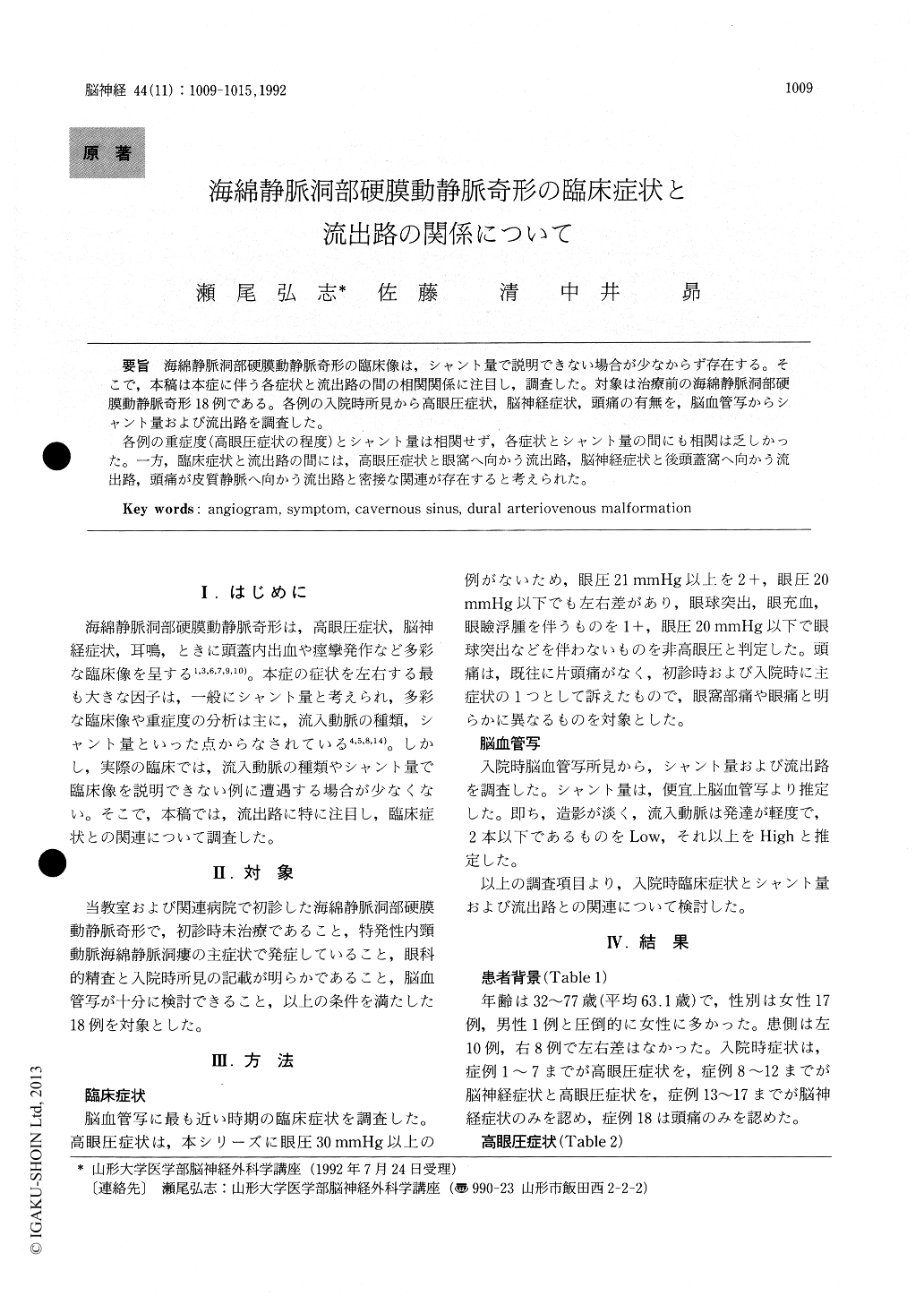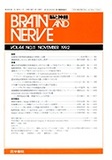Japanese
English
- 有料閲覧
- Abstract 文献概要
- 1ページ目 Look Inside
海綿静脈洞部硬膜動静脈奇形の臨床像は,シャント量で説明できない場合が少なからず存在する。そこで,本稿は本症に伴う各症状と流出路の間の相関関係に注目し,調査した。対象は治療前の海綿静脈洞部硬膜動静脈奇形18例である。各例の入院時所見から高眼圧症状,脳神経症状,頭痛の有無を,脳血管写からシャント量および流出路を調査した。
各例の重症度(高眼圧症状の程度)とシャント量は相関せず,各症状とシャント量の間にも相関は乏しかった。一方,臨床症状と流出路の間には,高眼圧症状と眼窩へ向かう流出路,脳神経症状と後頭蓋窩へ向かう流出路,頭痛が皮質静脈へ向かう流出路と密接な関連が存在すると考えられた。
The clinical picture of dural arteriovenous mal-formations cannot be explained on the basis of degree of arteriovenous shunting in many cases. Inthis study, therefore we focused on the relation between clinical symptoms and draining pathways.
Eighteen patients with dural arteriovenous mal-formation in cavernous region were studied before treatment. All patients underwent examination for their clinical symptoms, opthalmological examina-tion and angiography on admission. Angiograms were used to determine the degree of arteriovenous shunting and the direction of draining pathway.
The relationship between severity and shunt vol-ume was inexplicable in many cases. However, close correlations appeared to exist between ocular hypertension and drainage pathways toward the orbit, between cranial nerve signs and drainage pathways toward the posterior fossa, and between headache and drainage pathways toward the cor-tical veins.

Copyright © 1992, Igaku-Shoin Ltd. All rights reserved.


